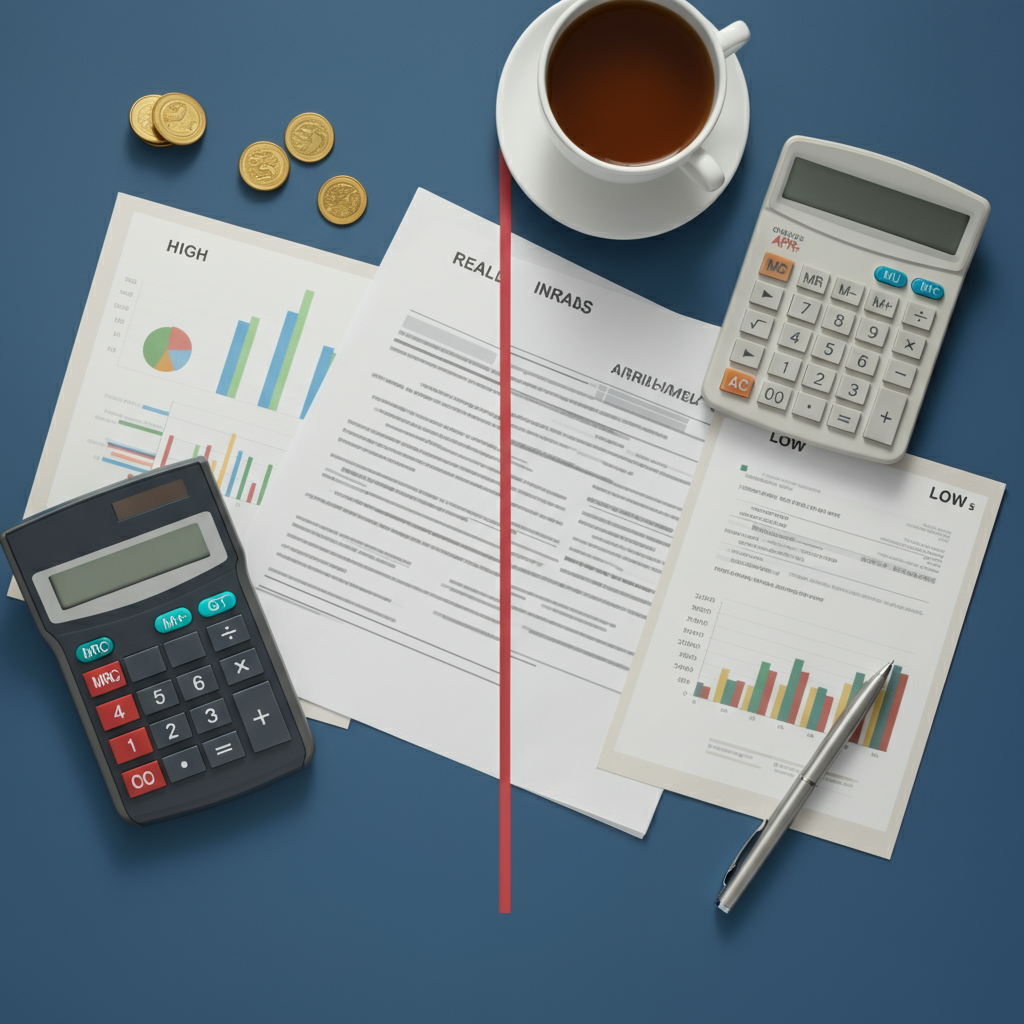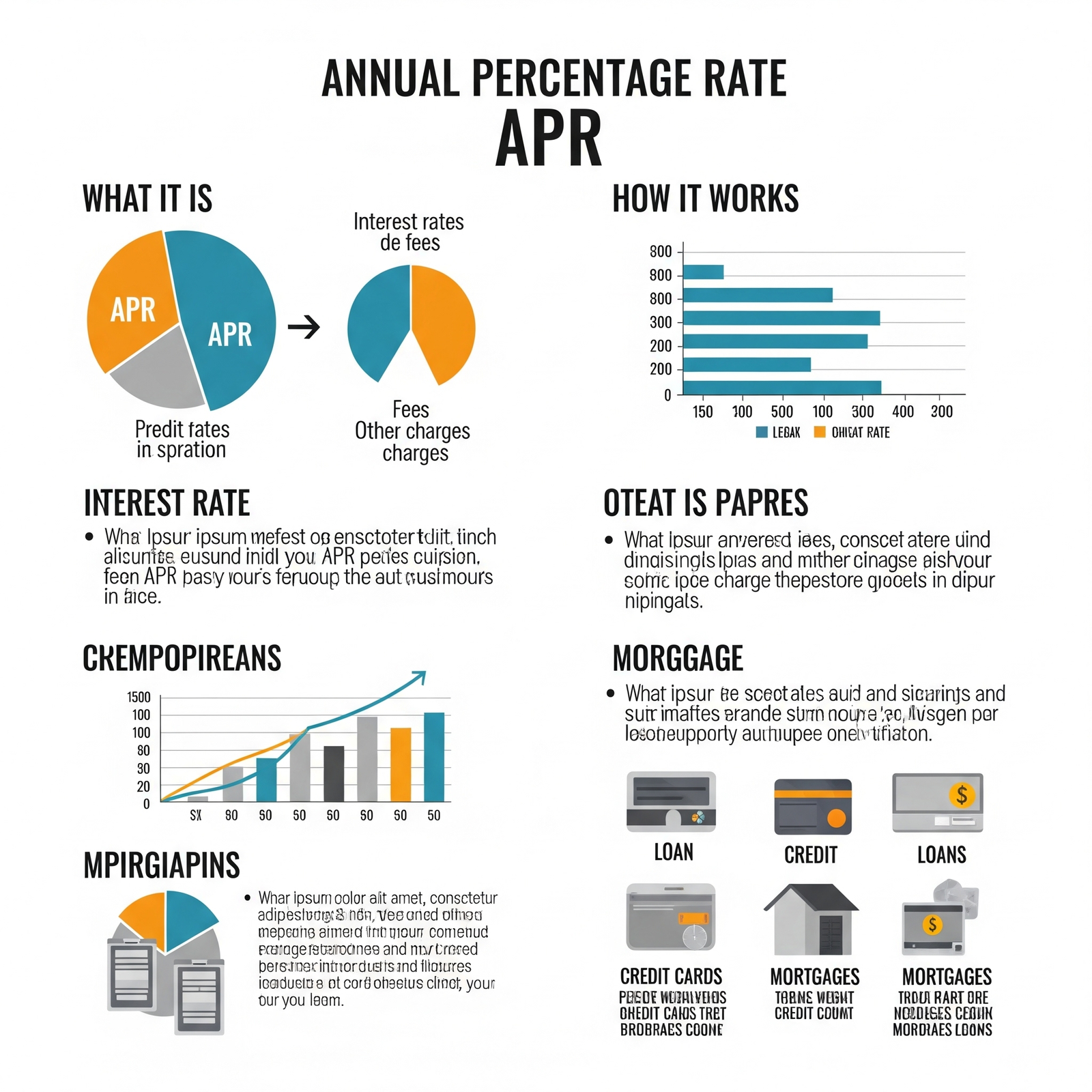Managing finances can be overwhelming, especially when terms like Annual Percentage Rate (APR) get thrown around in loan offers or credit card agreements. You’re not alone if you’ve wondered, “What is APR, and why does it matter?” The APR is far more than just another figure on your loan paperwork; it directly affects how much you’ll pay over time.
This guide will break down APR—the good, the bad, and the numbers in between. From understanding what APR is to learning how to calculate it and securing the best rate possible, this article has everything you need to become confident in making smarter financial decisions.
What Is APR and Why Is It Important?
Annual Percentage Rate (APR) is the yearly cost borrowers pay for taking out a loan, expressed as a percentage. It includes not only the stated interest rate but also any additional fees or costs baked into the loan terms. APR acts as a unifying metric to help compare loan products and credit card offers, making it a key figure for informed financial planning.
For instance, if two loans with the same $10,000 principal have different APRs at 6% and 9%, the loan with the higher number makes your borrowing more expensive.
How APR Works
At its core, APR reflects the annualized cost of borrowing money. It factors in the interest rate plus fees or other charges like loan origination fees, annual credit card fees, or mortgage closing costs.
Lenders calculate APR using the following formula:
APR = [(Fees + Interest) / Principal] ÷ Number of Loan Periods × 365 × 100
For example, a $1,000 loan with a $100 annual interest rate and $50 in additional fees would have an APR of 15%.
By combining fees and interest into one clear metric, APR provides transparency about borrowing costs.
Types of APR
APR isn’t one-size-fits-all. Understanding its variations is critical to assessing loan types or credit terms.
Fixed vs. Variable APR
- Fixed APR stays constant over the period of the loan, offering predictability for long-term borrowing.
- Variable APR, on the other hand, fluctuates depending on indexes like the prime rate, which introduces uncertainty regarding future costs.
Other Types of APR
- Purchase APR applies to credit card purchases.
- Cash Advance APR covers funds withdrawn as a cash advance (often higher).
- Introductory APR offers lower rates for an initial promotion period.
APR vs. Interest Rate
Although often used interchangeably, APR and interest rate are distinct concepts. The interest rate pertains solely to the percentage charged annually for borrowing, whereas APR includes both the interest rate and any associated fees.
| Difference | APR | Interest Rate |
|---|---|---|
| Includes Fees | ✓ Includes fees | ❌ Excludes fees |
| Comprehensive Borrowing Cost | ✓ Reflects total cost | ❌ Focuses on interest only |
Factors That Affect APR
APR is influenced by several elements, including:
- Credit Score: A higher score typically means a lower APR since lenders see you as less risky.
- Loan Amount and Term: Shorter-term loans often feature lower APRs.
- Loan Type: Credit cards, personal loans, and mortgages all come with differing APR levels.
How to Calculate APR
Here’s a step-by-step guide to calculate APR on a personal loan of $10,000 with a $200 fee and 10% annual interest over one year.
- Add the total interest and fees. Example:
- $10,000 x 10% = $1,000 interest + $200 fees = $1,200.
- Divide it by the loan amount:
- $1,200 / $10,000 = 0.12.
- Multiply by 100 to express as a percentage:
- APR = 12%.
Calculating APR yourself is useful when comparing multiple loan offers with varying terms.
Why APR Matters
Understanding APR can save you significant money over the life of a loan. Lower APRs mean reduced borrowing costs, while higher APRs can compound into unaffordable debts.
Tips for Getting a Lower APR
- Improve Your Credit Score: Pay bills on time, reduce credit utilization, and avoid opening unnecessary new accounts.
- Compare Offers: Don’t settle for the first deal; shopping around can often yield better rates.
- Negotiate with Lenders: Proactively negotiate to secure more favorable terms.
Common APR Mistakes to Avoid
- Failing to compare the APR instead of just the interest rate.
- Ignoring additional fees that inflate APR.
- Mistaking promotional (introductory) APR rates for permanent terms.
APR for Different Types of Loans
APR varies across loan types due to differences in terms, collateral requirements, and risks taken by the lender.
- Mortgages: Tend to offer lower APRs due to long repayment terms and secured collateral.
- Credit Cards: Feature higher APRs, particularly for cash advances.
- Personal Loans: Fall in between, with fixed or variable APR depending on the borrower profile.
Real-Life Examples of APR Impacts

Consider two loan offers:
- Loan A: 10% interest + 2% mandatory fees (APR = 12%).
- Loan B: 11% interest + no additional fees (APR = 11%).
While Loan A seems cheaper, its higher APR makes it less attractive long-term.
Pros and Cons of Low vs. High APR
| Aspect | Low APR | High APR |
|---|---|---|
| Borrowing Cost | Lower Costs | Higher Costs |
| Accessibility | Harder to Qualify | Easier to Qualify |
| Payment Predictability | Predictable Installments | Potential for Higher Interest Accrual |
People Also Ask
Is APR always higher than interest rates?
Yes, because APR includes fees in addition to the base interest rate.
Can APR change over time?
Yes, for variable APR loans tied to external indexes.
How is a good APR defined?
A good APR depends on the loan type and borrower creditworthiness. Below 10% is generally considered excellent for personal loans or credit cards.
Build Better Borrowing Habits
Mastering how APR works is crucial to making smarter financial moves. Whether you’re applying for a mortgage, signing a car loan, or reviewing credit card offers, understanding this metric gives you the power to make informed borrowing decisions.
To simplify financial management even further, check out our recommended tools on calculating APR, optimizing your credit score, and securing favorable loans.
